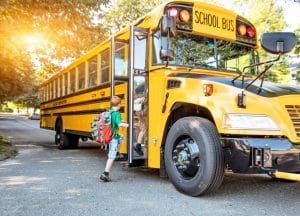Are School Buses Actually Safer Than Cars?
 School is back in session in North Carolina, which means those big yellow buses are back, too. Every day, we put our kids onto those buses and we send them off, secure in the knowledge that they’ll get to school safely.
School is back in session in North Carolina, which means those big yellow buses are back, too. Every day, we put our kids onto those buses and we send them off, secure in the knowledge that they’ll get to school safely.
But perhaps we should be more wary. In the last few months, there have been multiple reports of school bus-related accidents across North Carolina:
- On August 30th, two people sustained injuries after a school bus failed to yield as the driver turned left on Rt 70 in Burke County.
- On August 18th, a school bus was hit by a motorcycle near Highway 801 in Rowan County. The motorcyclist had to be airlifted to the hospital.
- On June 24th, a school activity bus from Rosman High School was in a head-on crash with another vehicle.
- On May 8th, a student was taken to a hospital after a bus crashed in Buncombe County.
- On March 23rd, a school bus driver fell asleep behind the wheel and drove off the road, hitting several trees. There were two adults and five special needs children on board at the time, but thankfully no one was seriously injured.
- On February 10th, multiple students were hospitalized after their school bus was hit by another drivers. The impact was strong enough to send the bus into a ditch on the side of the road.
If there’s any type of silver lining here, it’s that all the students involved in these incidents – even the ones who needed medical attention – survived the crashes. However, it did make us wonder whether school buses are as safe as we think they are.
What the data says about school bus safety
According to the National Safety Council (NSC) “school bus-related crashes killed 108 people nationwide in 2021.” To put that in perspective, 1,663 people died in motor vehicle accidents in North Carolina alone in 2021.
But what about injuries? Per NSC’s data, approximately 9,700 people sustained injuries in bus-related crashes in 2021:
- 4,000 were occupants of another vehicle
- 1,400 were school bus drivers
NSC doesn’t outline who the other 4,300 people were but does say that fewer than 500 school bus passengers, pedestrians, cyclists, and other non-occupants were injured.
Comparatively, the National Highway Traffic Safety Administration (NHTSA) reports that about 2.5 million people suffered injuries in car accidents in 2021.
Objectively, we can say that school bus accidents are far less likely to occur, and far less likely to lead to fatalities or injuries when they do, than other types of vehicle crashes.
What are the risks posed by school buses?
School bus crashes may be less common, but as we know, they do happen. The greatest risks to your child or others are created by the conditions in which those buses must travel – and potentially the buses themselves.
- Constant stopping and starting. School buses, of course, make a lot of stops to pick up and drop off children. This constant stop-and-go poses two risks: first, that impatient or distracted drivers may not realize that children are still entering or exiting the bus and may potentially hit a child, and second, that children who are walking around or on a moving bus could fall.
- Inclement weather. According to the Charlotte Observer, Mecklenburg County averages about 5” of snow per year. On days where snow (or other types of potentially destructive weather events) is predicted, a school district may cancel classes. But most of the time, districts remain open, and that means bus drivers need to navigate in bad weather. Even the most experienced driver can hydroplane or skid in heavy rain, sleet, or light snow, or miss the warning signs of danger because of fog or other low visibility conditions.
- A higher center of gravity. Large vehicles of all kinds have a higher center of gravity, and that increases the risk of a rollover. In the event a bus is hit, it is more likely to roll than smaller vehicles are. A new rule was passed by NHTSA in 2021 to establish better structural integrity for buses in the event of a rollover, but that rule is not final until 2024 – and older buses will not be retrofit for the new systems.
- Larger blind spots. Much like commercial trucks, school buses have blind spots, too. It’s why they have those giant mirrors on the side. But even with the mirrors, bus drivers cannot see everything – and other drivers may not be able to see around the bus, either. Again, this speaks to the risk students face as they board or exit a bus. Blind spots also increase the risk of a collision even when the bus is in motion, as drivers may not see smaller vehicles moving around them.
There may be additional, specific risks based on where you live and where your children go to school. For example, North Carolina law mandates that there must be a school bus stop within one mile of a student’s home, and that buses are not required to travel private roads. This means that some students may have a longer walk to and from the stop and may be required to wait on “state maintained highways, municipal streets, or other streets with publicly dedicated right-of-way.”
Why don’t school buses have seat belts?
Given how often we say that seat belts save lives (and they do), you might find it strange that school buses don’t have them. The truth is, the design of the bus precludes the need for seat belts, unless your child has specific mobility concerns which would require them.
From the North Carolina Student Transportation department:
School buses have to meet rigid federal construction standards for the sides and top of the bus, fuel tanks and inside of each bus. The thick padded seats and seatbacks provide a passive form of crash protection known as “compartmentalization.” This padding, combined with the placement of the seating area high above the impact zone (with most other vehicles), offers a protection that has resulted in an unmatched record of passenger safety.
Note that some school buses do come equipped with three-point safety belts, but North Carolina law does not require them.
Who can drive a school bus in North Carolina?
North Carolina has four specific requirements to become a school bus driver:
- At least 18 years old
- At least six months driving experience
- Hold a commercial driver license based on state of residence with “S” (school bus), “P” (passenger) endorsement symbols (must be able to acquire)
- Have a School Bus Driver Certificate (must be able to acquire)
Per the official NC Department of Motor Vehicles website, “to obtain a School Bus Driver’s Certificate, an individual must be specially trained and pass an examination by a N.C. Department of Motor Vehicle Driver Education Program Specialist that demonstrates the fitness and competency required to operate a school bus.”
Different counties and districts may have additional requirements. Charlotte-Mecklenburg Schools, for example, require passing a written test and a road test, a good driving record, and references. Some districts may require additional training and/or background checks.
What can I do if my child is injured on or near a school bus?
The first thing you should do, if you are there, is seek medical attention. If the injury occurs on school grounds and the school did not call 9-1-1, then you should take your child to a doctor as quickly as possible. (You can also call 9-1-1 to request an ambulance.) Child injuries can compound over time, so it is incredibly important that your child gets immediate treatment.
Once your child has received care, call Price, Petho & Associates. Injuries on or near school grounds may open the school or the district itself to liability, and you do not want to pursue this type of claim on your own. Time is not on your side, so the sooner you call our personal injury lawyers in Charlotte, the faster we can get to work for you.
Even if your child was injured off school grounds, such as while walking or cycling to or from a bus stop, you still want to contact us quickly if you can. Doing so means you have an advocate on your side to negotiate with the insurance companies and ensure that your child’s future care will be secure.
How can I help my child stay safe on and around school buses in Charlotte?
The single best thing you can do to help your child is to model good behavior. This means following all traffic rules and acting with caution around school buses. The North Carolina Department of Transportation offers this helpful chart of school bus safety tips:
| Do’s | Don’ts |
|
|
|
|
|
|
|
|
|
|
|
|
|
|
As for keeping yourself safe, always be aware. Remember that small children will dart into a roadway, so when you’re near a bus, keep your eyes open and slow down. If you see the flashing red lights, stop. You’re safe to move again once the lights go out and the extended stop arms are withdrawn.
If you’ve been injured in an accident, call our attorneys now
If you or your child was injured in a school bus-related incident, let us help. Price, Petho & Associates has the knowledge and resources to handle complex claims against insurers and school districts, as well as any additional third parties. We care about you and your child, and we are committed to reaching the best possible outcome for you. For a free consultation with our Charlotte school bus accident lawyers, please call us or fill out our contact form. We maintain additional offices in Rockingham and Rutherfordton.

Attorney Doug Petho is the owner and founder of Price, Petho & Associates. His primary focus is the litigation of plaintiff’s personal injury suits, and he has successfully tried hundreds of cases to jury verdict involving car accidents, trucking accidents, pedestrian accidents, slip and fall accidents, and work-related accidents. Contact his office in Charlotte today.
